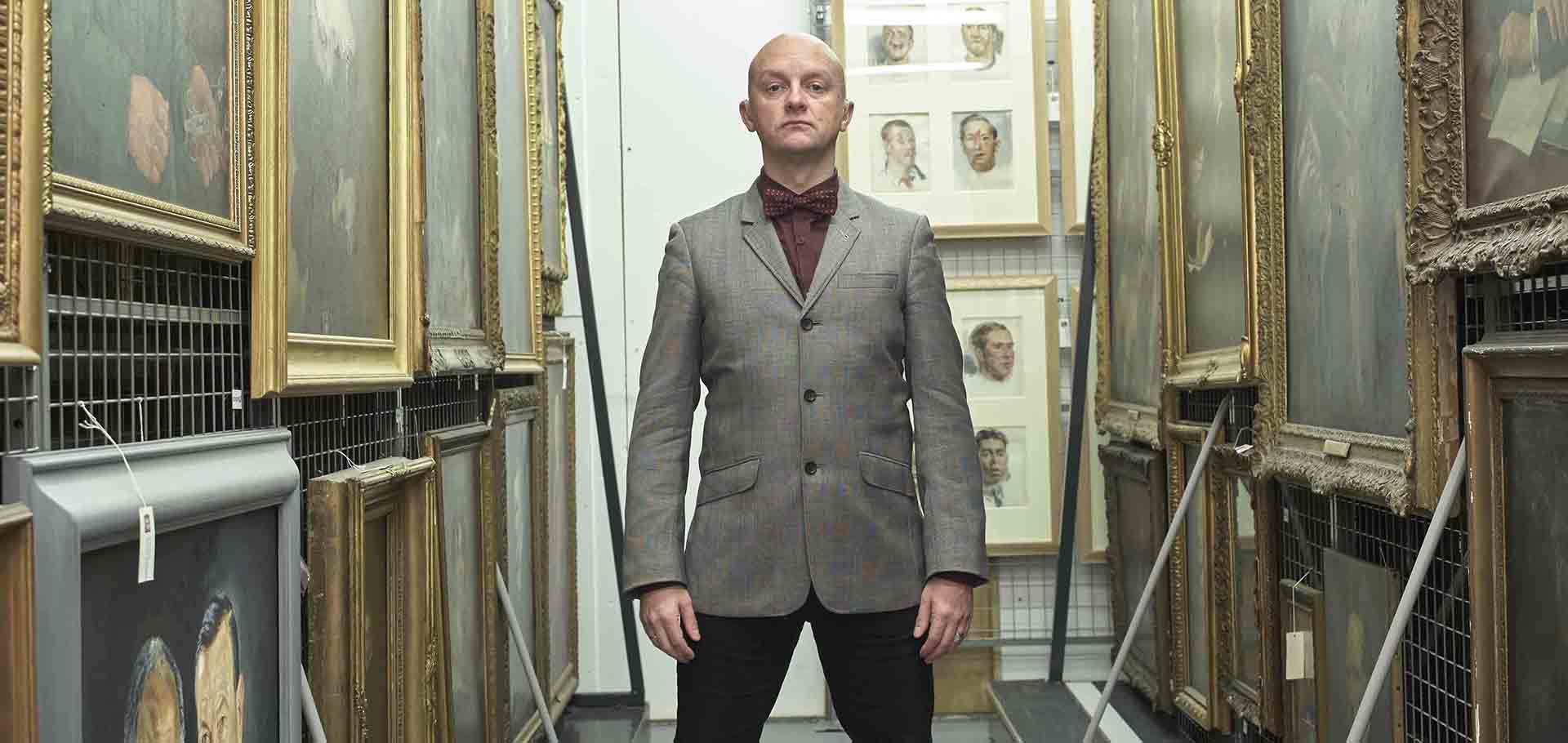Blog: Mark Smith
The founder and artistic director for Deaf Men Dancing, an innovative all deaf male dance company, on discovering deaf heritage
I never knew when I started working on Exceptional & Extraordinary that I would learn so much about deaf history and deaf culture. I’m surprised how little I knew about it and I found it sad that I was never taught about it when I was at school.
I’ve been delving into the archives and looking behind the scenes of museums, talking with curators and professors and unearthing objects and stories that have surprising and new to me. The things I’ve discovered have also been incredibly meaningful for me, making me not only understand deaf history better but also making me even more proud of my deafness.
All the stories I’ve found in museums – many hidden from view – have been inspiring a new dance performance, Let Us Tell You A Story, which will be performed by Deaf Men Dancing in museums in Leeds, London and Edinburgh this month. Through looking at ear horns and hearing aids dating back a hundred years or more, I’ve started to appreciate my own hearing aids more. Having them has helped me to hear better and improved my life, especially at work where I work with music a lot. Seeing the ways in which people struggled in the past and the limited equipment they were able to access, I’ve found myself very grateful. I’ve also seen that, in the past, many people had to keep their hearing equipment discreet – they wanted to appear like hearing people. Today, thankfully, things are very different and many young people proudly wear their brightly coloured hearing aids in public.
My favorite object that I’ve encountered whilst investigating behind museums’ collections has been Queen Victoria’s ear horn because of its beautiful design and ornate decoration. It’s incredible – and to think she actually used it and I got to try it out.
I was also very moved to find out about the Milan conference in the 1880s, sometimes referred to as the start of the dark age of deaf history. This story had a huge impact on me personally. All the delegates at this conference voted to ban sign language and brought in oral methods where deaf children and adults had to learn to speak like hearing people through speech therapy. They were not allowed to sign, which is really sad because their true language was taken away – it took away their fundamental rights.
Deaf people were controlled and managed by hearing authorities who thought they knew best for deaf people’s lives but they were wrong. For over 100 years, deaf people were forbidden to sign. On 18 March 2003 the UK government finally formally recognised that British Sign Language (BSL) is a language in its own right. I found it incredible that it took such a long time for deaf people to gain their own language back.
I was approached to create this new work as part of a bigger project – Exceptional and Extraordinary: Unruly Bodies and Minds in the Medical Museum. I immediately jumped at the chance to join the project because it was an opportunity to try to break down barriers and change people’s perceptions and sometimes negative attitudes towards deafness and deaf people. That’s what my work with Deaf Men Dancing is about. I like to create work that makes people think, experience, learn and talk about it as well as being entertained.
Being part of this bigger project and the chance to work closely with researchers and museums has enabled me to work in a very different way. I’ve been able to explore deaf history and culture in a much more in-depth but also much more political way. I’ve been given the chance to push the boundaries and to really challenge the way people think. I’ve used these new experiences to create a wholly new kind of multi-sensory performance that I hope people will enjoy. That’s the kind of challenge I’m attracted to and relish. After investigating museums – the stories they tell and the stories that have been overlooked – I feel that it’s really important that I bring the little-known history of deafness out and share it with new audiences, many of whom will have little awareness of deaf culture.
Similarly I want younger generations of deaf people to learn about their own history. Why shouldn’t young people learn about histories with which they have a real, personal connection, as opposed to learning about the French Revolution?
We’re busy in rehearsals right now and can’t wait to take it on tour. I hope the people who see it will gain understanding, knowledge and awareness, and have a greater respect for deaf people. I would love to create a debate after the show and have the audience still talking about it the next day. I hope people will be amazed by brilliant dancers who are so talented that they deserved to be recognised as equal to hearing professional dancers.

Leave a reply
Your email address will not be published.